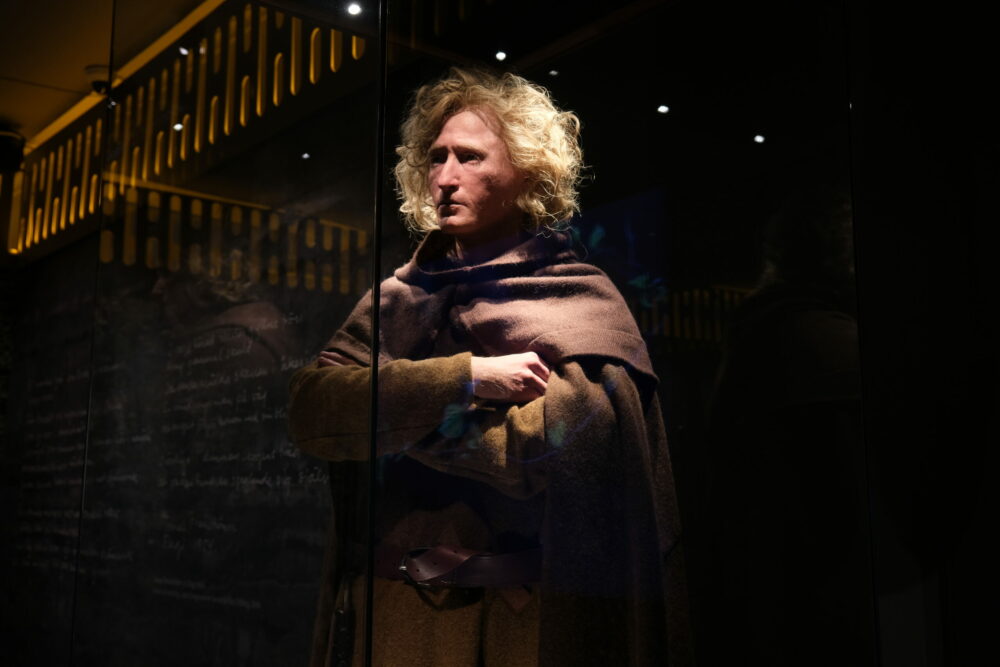5. Face to face with the Middle Ages
Now, you’re standing face to face with the Middle Ages. This is more or less what the Bocksten Man would have looked like when he was alive.
To recreate his look, the museum called on modellist Oscar Nilsson. Nilsson used a scientific method, starting with (a copy of) the skull and then recreating the man’s face layer by layer from the inside out. When the model was constructed, the Bocksten Man was given light hair; recent DNA research, however, suggests he was dark-haired instead.
We know the Bocksten Man died in the mid-14th century and that he lived in the Varberg area, or at least he did in the final years of his life. What was life in Halland like in those days?
The 13th and 14th centuries were an uncertain time for people in these parts.
The vast majority of them were farmers – tenant farmers in particular, which means a farmer doesn’t own their own land but pays to lease land from the nobility instead. The nobility amassed wealth and built themselves large castles, while most ordinary farmers lived in poverty.
Halland’s first real cities, Halmstad and Laholm, were built in the 13th century. Varberg emerged next, followed by Falkenberg and Kungsbacka.
Around 1350, the Black Death devastated Europe. Halland wasn’t spared: its population was decimated, turning entire farms and villages into ghost towns. The different Scandinavian kingdoms were also constantly at war with each other at that time, so both north and south Halland came under different rulers at different times. Where does the Bocksten Man fit into this story? What part did he play? Was he murdered? Who dumped him in the bog with piles rammed through his body? Ironically, whoever tried to make sure he would never see the light of day again actually achieved the opposite. Today, it is the Bocksten Man who lives on: those who impaled him are long since forgotten, vanished without a trace

